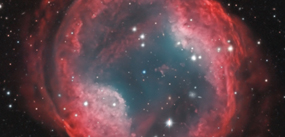Syllabus
Download & Print [pdf]
Syllabus for FRI Astronomy Stream:
Exploring the Physics of the Universe with White Dwarf Stars
Fall 2013, AST 375, unique # 48590
Faculty Stream Leader: Don Winget
Office: RLM 16.236
Phone: (512) 471-3404
Research Educator/Contact: Mike Montgomery
Office: RLM 16.232
Phone: (512) 471-3451
Email: mikemon@astro.as.utexas.edu
URL: http://rocky.as.utexas.edu/~mikemon
Flags: Independent Inquiry (II)
Class meetings:
Lecture: F 3–4pm, RLM 7.116
Lab: W 10am–noon, W 4–5pm, Th 1:30–4 pm, RLM 15.201
The Course:
You will participate in an active and ongoing research project using white dwarf stars to study the nature of dark matter, cosmochronology, and the physics of matter in extreme conditions. In this course we will go from the foundations of astronomy to the cutting edge of scientific research in astrophysics.
We will begin with an orientation to the field and will work on developing a grasp of the major components of scientific investigation as applied to astrophysics: analytical theory, numerical and physical experiment, instrumentation, observation, data acquisition, reduction, analysis and interpretation. We will spiral through these areas as we go, developing skills and abilities as we deepen our understanding. Together we will identify your areas of interest and strengths in scientific investigation and build on these. Your paths through the course will be similar, but each path will be individually tailored to meet your needs and focus your strengths, filling in gaps in your understanding as we go.
It is mandatory that you obtain a lab book and that you use it to document your progress in the research portion of this course; it may also be used for notes from the lecture part of this course. While research projects may extend beyond the end of the semester, you will hand in your lab book so that we may better evaluate progress on your research project and in the course in general.
Grades will use the Plus/Minus system and will be based on:
25%— participation and interaction
25%— notes and logbooks
50%— individual projects
Techniques: time series observations and analysis, CCD data reduction, frequency and fourier analysis, plotting and analysis of data, mathematical modeling of pulsations, numerical simulations of crystallization and convection
Note: As a general orientation to Astronomy classes at UT you should check out:
